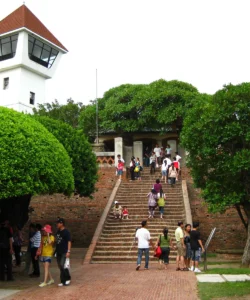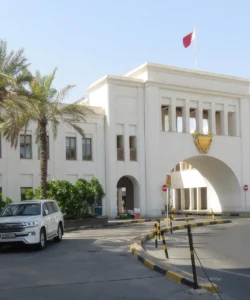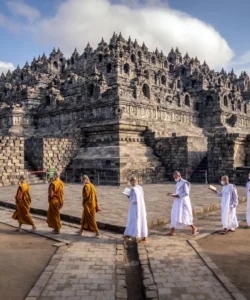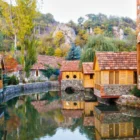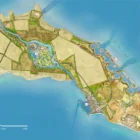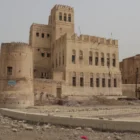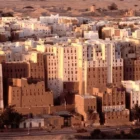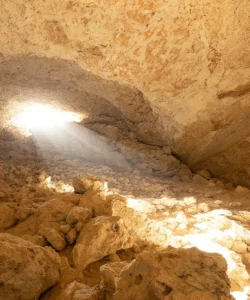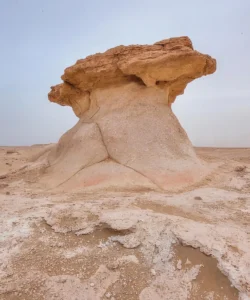Odzun Church (Armenian: Օձունի Սուրբ Աստվածածին եկեղեցի, Odzuni Surb Astvatsatsin yekeghetsi, meaning Holy Mother of God Church) is one of Armenia’s oldest and most historically significant Christian basilicas. Located in the Lori Province, this domed basilica is celebrated for its unique architecture, ancient origins, and the rare funerary monument found within its complex.
Listen to an introduction about Odzun Church
Name and Address
- Name: Odzun Church (also known as Holy Mother of God Church, Holy Sign, or St. Astvatsatsin Church). The name “Odzun” is believed to derive from the Armenian word “otsel,” meaning “to ordain,” as Apostle Thomas is said to have ordained priests here.
- Address: Odzun village, Lori Province, Armenia.
- Location: Situated on a plateau overlooking the dramatic Debed River gorge, approximately 8 km southwest of the town of Alaverdi and about 162-174 km (100-108 miles) north of Yerevan. The village itself is ancient, adding to the historical ambiance.
How to Get There
Odzun Church is a popular destination in northern Armenia, often visited as part of a tour of the Lori Province:
- From Yerevan:
- By Car/Taxi: A direct drive takes about 2.5 hours. Taxis are available, or you can rent a car for greater flexibility to explore the surrounding region.
- By Public Bus/Minibus (Marshrutka): Take a bus or minibus from Yerevan (e.g., from Kilikia Bus Station or Hayreniq Tour Office) to Alaverdi. The journey can take 2.5 to 4 hours, depending on the service. From Alaverdi, you can take a local marshrutka or taxi for the short ride up to Odzun village.
- By Train: A train from Yerevan to Vanadzor (the provincial capital of Lori) takes about 4.5 hours. From Vanadzor, you would need to take a local minibus or taxi to Odzun (around 30 minutes).
- Organized Tours: Many tour operators offer day trips or multi-day tours that include Odzun Church, often combined with other UNESCO sites in Lori like Haghpat and Sanahin Monasteries.
- Visitor Information:
- Hours: Typically open daily from 9:00 AM to 10:00 PM (some sources indicate earlier closing). It’s always a good idea to check locally for the most current hours.
Landscape and Architecture
Odzun Church is a striking example of early medieval Armenian ecclesiastical architecture, blending seamlessly with the picturesque northern Armenian landscape.
- Architectural Style: The current structure is a domed basilica made of pink felsite stone, with three naves. It’s considered one of the few completely preserved early medieval religious buildings in Armenia. Its design represents a synthesis of basilican and central-plan church forms, similar to other 7th-century Armenian churches.
- Historical Evolution: The original church, built by King Tiridates III in the early 4th century and consecrated by Gregory the Illuminator, was a smaller, single-nave basilica. It was damaged by an earthquake in the 5th century and largely reconstructed in the 6th century. It acquired its present form in the 8th century under Catholicos Hovhannes III Odznetsi.
- Key Features:
- Arcaded Cloisters: Unusual arcaded cloisters on its northern and southern sides, with a blind wall and arched entrance on the west, adding to its distinctive appearance.
- Dome and Interior: A central dome supported by piers, with a barrel-vaulted roof. The interior features a tall central nave contrasting with lower, narrower side aisles.
- Figural Relief Sculpture: The church is notable for its intricate stone carvings and bas-reliefs. The eastern facade features a carving of Christ holding the Gospel of St. John, flanked by two angels holding snakes (an unusual motif in Christian art). Other figures are carved on the north, south, and west elevations.
- Funerary Monument: Located about 10 meters northeast of the church is a rare and unique funerary monument dating to the 5th-6th centuries. It consists of two narrow, obelisk-shaped stelae set between double arches on a stepped platform. The stelae are intricately carved with scenes from the Old and New Testaments, as well as depictions related to Armenia’s conversion to Christianity (including King Trdat III represented as a boar). This is one of only two such monuments in Armenia.
- Materials: Built primarily from delicate rose-colored tuff stone, which is characteristic of Armenian architecture and sparkles with different shades in the sunlight.
- Landscape: The church is set on a high hill, offering panoramic views of the surrounding Lori Province, including the deep Debed Canyon. The lush greenery and colorful autumn foliage of the region enhance the church’s serene and majestic ambiance.
What Makes It Famous
Odzun Church’s fame is rooted in its ancient origins, unique architecture, and significant historical artifacts:
- Early Christian Heritage: It is one of Armenia’s earliest Christian basilicas, tracing its foundation back to the 4th century and its consecration by Gregory the Illuminator. It is also linked to the legend of Thomas the Apostle burying Christ’s swaddling clothes here.
- Unique Domed Basilica: Its architectural style, a domed basilica with external arcaded cloisters, is a rare and well-preserved example of early medieval Armenian church design.
- Rare Funerary Monument: The 5th-6th century funerary monument with its intricate biblical carvings and depictions of Armenia’s Christianization is a truly unique piece of Armenian religious art and sculpture.
- Artistic Details: The detailed bas-reliefs and carvings on the church’s facades, particularly the unusual Christ and snake motif, make it a significant site for art history enthusiasts.
- Picturesque Setting: Its location on a plateau overlooking the Debed Canyon provides a stunning backdrop, making it a highly photogenic site.
Differences from Other Landmarks
Odzun Church distinguishes itself from other Armenian landmarks in several key ways:
- Architectural Type: While many Armenian monasteries are either rock-cut (like Geghard Monastery) or fortified complexes in dramatic natural settings (like Tatev Monastery), Odzun is a prominent example of an early domed basilica with unique external arcades, representing a distinct phase in Armenian church architecture.
- Specific Funerary Monument: The highly distinctive and well-preserved funerary monument with its carved stelae is a feature almost unique to Odzun (with one other similar example in Aghudi), setting it apart from other sites that may feature numerous khachkars (cross-stones) but not this specific type of memorial.
- Early Foundation and Reconstruction: While Etchmiadzin Cathedral is also an ancient foundation, Odzun’s history involves a significant reconstruction in the 8th century that gave it its current, distinctive domed basilica form, showcasing a different evolutionary path in church design.
- Location in Lori Province: Unlike the monasteries closer to Yerevan (like Geghard or Khor Virap) or those in the southern regions (like Noravank), Odzun is a key site in the northern Lori Province, known for its lush green landscapes and proximity to other historical sites like Haghpat and Sanahin.
Odzun Church Photos:

































